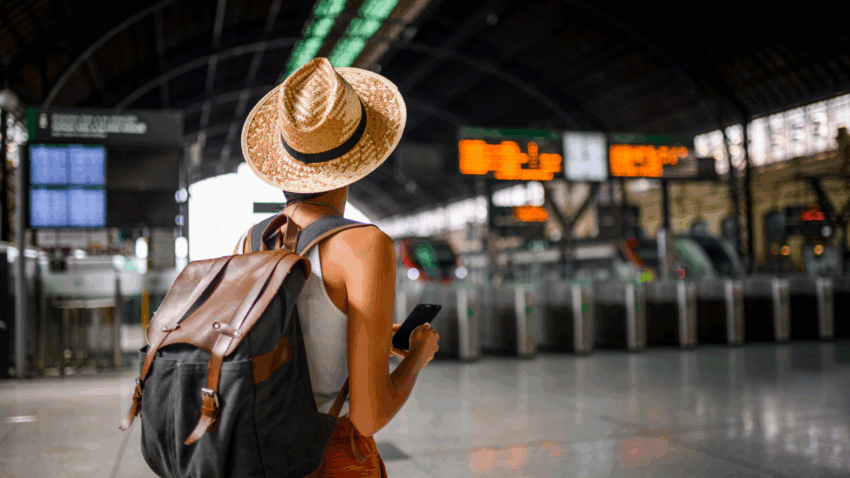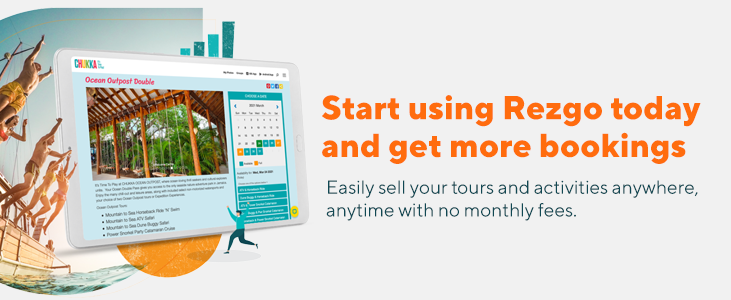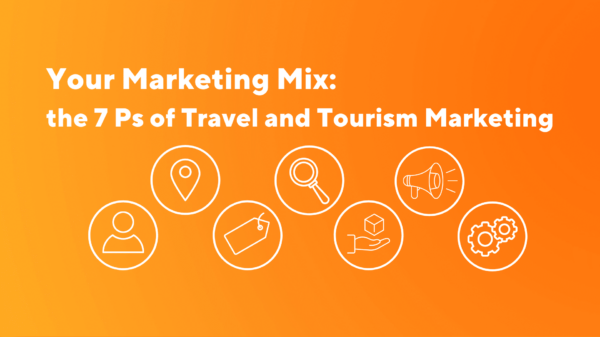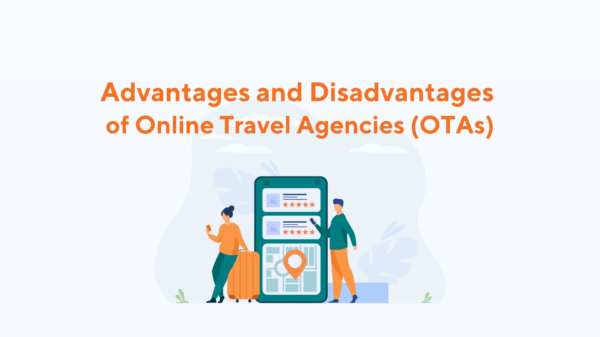Table of Contents
Not everyone has a posse of friends or family group to travel with, making going solo their only option. However, many travelers are increasingly choosing to explore the world alone for any number of reasons—from improving their mental health to exploring their personal interests and passions. Solo travel has appeared in one form or another in our annual round-up of tourism trends for the last couple of years, and the clamor for tours and experiences catering to solo travelers isn’t letting up. In fact, demand is increasing.

Forbes called 2024 the “year of the solo traveler,” highlighting its evolution from niche market to a considered choice for many travelers. The same year, a Skyscanner report into the growth in solo travel concluded, “There is no longer any stigma attached to taking a trip on your own, and many tour companies cater specifically to this market.” Solo travel again featured prominently on Forbes’ annual Travel Trends Report for 2025, and Hilton’s Annual Trends Report for 2025 found that 47 per cent of global respondents “often travel by themselves.”
Who is traveling solo?

The answer is… it could be almost anyone. In their 2024 report, Skyscanner found that singles and divorcees ranked highly for being ready to take a solo trip. However, don’t confuse solo travel with “singles” travel. There are specialist companies that marketthat do market to singles, such as Contiki, but not everyone traveling solo is doing so in the hope of meeting a partner or even making a friend.
Arival’s 2024 U.S. Tour Taker report found that that the preference for independent travel increases with age, with 38 percent of people over 55 preferring to go it alone, compared with 26 percent of the 18-34 group. This indicatesindicated that older, more experienced travelers, who are often more affluent, prefer small group and independent travel. Research by Solo Traveler World backed this up with findings that showed the majority of solo travelers to be aged between 30 and 50.
However, they are now being joined by younger generations. Hilton’s report found that Gen Z (55 percent) and Millennials (51 percent) were more likely to travel solo on a regular basis. The American Express 2024 Global Travel Trends Report found solo travel “to be a major trend among young travelers, with 76 percent of Millennials and Gen-Z planning solo trips this year.”
Women travelling on their own or with other women also continues to be a growing trend. In “The Rise Of The Female Adventurer,” Forbes highlighted one survey that found that 71% of solo travelers are women. The report also quoted the founder of founder of the largest hostel chain in Europe as saying, “There has been a remarkable increase in solo travelers since last year across the portfolio. Notably, we’ve seen a significant bump in solo female travelers. This trend continues to grow at such a rapid pace that we’ve added a significant additional number of female dorms to our hostels.”
What’s behind the solo travel trend?
What’s driving this rise in solo travel? The Hilton named the trend “MeMooning,” reflecting that many people simply want some “me time.” This could be for stress relief, self-discovery and general mental wellness, or just to enjoy the freedom to do what they want and pursue their own interests.

Solo trips are also easier to plan. Travelers don’t need to worry about what the rest of a group wants to do, or be held back by scheduling conflicts. They can create their own, personal itinerary. With no daily “So, what will we do today?” or “Where will we eat dinner?” discussions, solo travelers are free to march to the beat of their own drum. That can be a big draw for many people frustrated with the compromises that often have to be made when traveling with a group.
In fact, Solo Traveler World found that 58% of solo travelers prefer going alone simply because it allows them to do what they want, when they want.
What are solo travelers looking for?

The American Express trends survey found just over half of respondents prefer short and sweet weekend getaways rather than a long solo trip. Close to a third preferred to travel solo to a new city to explore its attractions and soak in its atmosphere. The same report highlighted “deep relaxation, developing a new interest, or meeting new people” as big drivers in the rise of social travel.
Solo doesn’t mean unsociable. A recent LinkedIn article highlighted that tour operators should “help solo travelers feel like they belong without requiring them to blend in.” Solo travelers enjoy opportunities to meet others like them through small group tours, food experiences, and other relaxed activities.
Many solo travelers are looking for opportunities to immerse themselves in local culture, often through a relevant activity such as studying art or taking cooking classes. When it comes to booking a tour, solo travelers often prioritize flexible and last-minute bookings.
Putting safety first

Safety and comfort can also be top priorities for solo travelers, especially women. It’s up to tour operators to reassure travelers that they can enjoy their vacation without worrying about their safety. Here are a few tips:
- Communicate clearly: Detailed information about what to expect can be very reassuring for solo travelers, including where to meet, how to get around, what to be careful of, and emergency contacts.
- Provide support: Guides who understand the needs and concerns of solo travelers can ease the anxiety some travelers might experience.
- Prioritize safety: Think about safety when finalizing venues, transport routes, accommodation, and other tour elements.
Pricing tours for solo travelers

Historically, the dreaded “single supplement”—that extra charge for travelers not sharing a room or activity—has put off solo travelers, or left them feeling undervalued and even unwanted. Consider:
- Waiving or reducing single supplements
- Offering opportunities to “buddy up” solo travelers or otherwiseother ways to save on single supplements
- Providing things of value to solo travelers like booking flexibility and no or low penalties for cancellation or rescheduling to offset any extra costs
How to attract solo travelers

Developing tours for solo travelers is no different from targeting any other market. It means being aware of their specific needs and concerns, and designing and marketing tours and experiences appropriately. Here are some examples of tours for solo travelers:
Interactive, engaging, and immersive experiences that can be enjoyed independently, while still offering opportunities for socializing, are big draws for solo travelers. These include:
- Food and drink tours
- Educational and cultural workshops and experiences
- Adventurous activities
- Wellness, mindfulness, and self-care experiences
When it comes to marketing tours to solo travelers, tweak your messaging and content to include mentions of safety, opportunities to socialize, and all the other things solo travelers value and prioritize. Here are a few specific marketing tips:
- Feature solo traveler-focused visuals
- Emphasize the (optional) social aspects of tours
- Share testimonials that talk to things solo travelers value, like safety and flexibility
- Optimize your website for relevant search terms, such as “solo tours,” “tours and activities for solo travelers,” or “traveling solo”
Solo travel is definitely here to stay. Tour companies that ignore the benefits of catering and marketing to solo travelers could miss out on a valuable market segment.
At Rezgo, we always have our ear to the ground when it comes to the latest tourism trends and business opportunities. The Rezgo booking system is a comprehensive platform that enables you to become a more profitable business. It can also help you future-proof your business so you can develop and grow as the tourism industry changes. Book a demo today or sign up for free and start using Rezgo.





